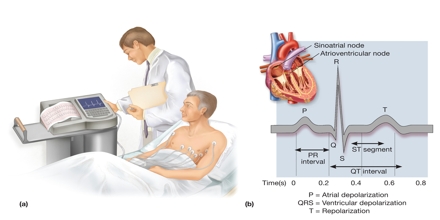


You have symptoms, and your healthcare provider wants to learn more (either by diagnosing a problem or ruling out possible causes).Your provider will order an echo for many reasons. The lines on this graph show your heart rate and rhythm. It produces a graph, rather than pictures of your heart.

It produces moving pictures of your heart.Īn EKG checks your heart’s electrical activity. But they check for different things and produce different types of visuals.Īn echo checks the overall structure and function of your heart. an EKG?Īn echocardiogram and an electrocardiogram (called an EKG or ECG) both check your heart. A transesophageal echo may take up to 90 minutes. Some people experience an allergic reaction to the contrast agent, but reactions are usually mild.Īn echocardiogram usually takes 40 to 60 minutes. The substance is visible in the images and can help show details of your heart.

Your provider injects a substance called a contrast agent into one of your veins. It can catch early signs of some heart disease. This approach shows changes in how your heart muscle moves. This technique also shows your blood flow, but it uses different colors to highlight the different directions of flow. This technique shows how fast your blood flows, and also in what direction. Using 3D also allows your sonographer to see parts of your heart from different angles. New 3D techniques show different aspects of your heart, including how well it pumps blood, with greater accuracy. Advances in technology have made 3D imaging more efficient and useful. Traditionally, these slices could be “stacked” to build a 3D structure. It produces 2D images that appear as “slices” on the computer screen. The best technique depends on your specific condition and what your provider needs to see. Several techniques can be used to create pictures of your heart. What techniques are used in echocardiography? Each one offers unique benefits in diagnosing and managing heart disease. There are several types of echocardiogram. What are the different types of echocardiogram? They’re prepared to work in a variety of settings including hospital rooms and catheterization labs. They’re trained in performing echo tests and using the most current technology. Who performs an echo test?Ī technician called a cardiac sonographer performs your echo. This makes an echo different from other tests like X-rays and CT scans that use small amounts of radiation. Providers often combine echo with Doppler ultrasound and color Doppler techniques to evaluate blood flow across your heart’s valves.Įchocardiography uses no radiation. This helps the provider evaluate the pumping action of your heart. During an echo test, your healthcare provider uses ultrasound (high-frequency sound waves) from a hand-held wand placed on your chest to take pictures of your heart’s valves and chambers. An echocardiogram (echo) is a graphic outline of your heart’s movement.


 0 kommentar(er)
0 kommentar(er)
